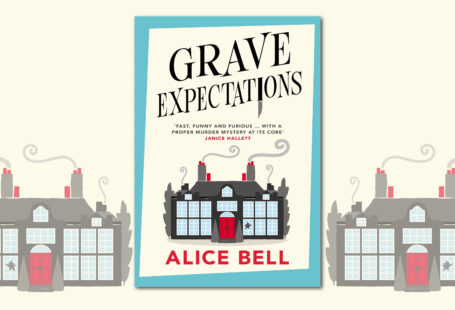This short, simple book charts a year in the life of an unnamed woman who is trying to adjust to her role as a single mother following the upheaval of her husband’s departure and her move into a dilapidated fourth floor apartment in Tokyo.

Surrounded by windows on all sides, she is constantly illuminated, making it impossible to hide her true feelings from her daughter or the limited interactions she has with the outside world.
Told entirely from her perspective, she opens a door on the mind of someone who is at a loss as to what direction to take in life. Driven by desires she can’t make sense of and an impulsiveness which is revealed to have governed her life even prior to the birth of her child, she is a person lost in liminality. This is echoed by the fact that it’s never truly dark in her home. Surrounded by windows on all sides, she is constantly illuminated, making it impossible to hide her true feelings from her daughter or the limited interactions she has with the outside world.
I read the book in one sitting (with an obligatory break for a cigarette and to top up my wine glass) and, afterwards, found myself overcome by a pervasive silence and a need to understand my own space. My apartment couldn’t be more different from that of the woman’s: a single story, ground floor cubby; it’s embedded in an alleyway created by the taller buildings that surround it. My own light is reflected, borrowed, yet still it floods the apartment, invading wherever it can, spreading to the point where its source becomes indeterminable. Like the origin of our wildest, most foreign seeming thoughts, it leaks in—and while this light is revealing, it can also be unsettling.
In the novel, for instance, the woman is preoccupied by her dreams. She feels a constant pressure from them, as if they are trying to reveal a part of her inner self—a part that both terrifies and excites her. Meanwhile, as the apartment and the world seem to contract around her, she experiences bouts of melancholy and self-pity which make it difficult to empathise with others as well as her own child, whose behaviour is growing increasingly erratic and volatile.
As one of those infinitely energetic (and I’m sure quite irritating) children who needed to be kept on a leash (and perhaps still should be), I couldn’t help but reflect on my own mother, but found that her thoughts were beyond my experience, just as the struggling woman, too, feels disconnected from those around her. No matter how she tries, she can’t know what they are thinking, unaware of the fact that she, herself, lacks the emotional capacity to perceive them clearly. Accordingly, our impressions become muddled with her own, so that thoughts such as, “How could a mother think like that about her own child?” suddenly become, “How could she not?” Her selfishness, too, despite being shocking at times, is also recognisable—it’s a part of all of us, something that can be forgotten about and dismissed, but lurks, like the light, waiting for an opportunity to show itself. For this woman, her opportunity comes with the breakdown of her marriage and the slow monotony in which her life continues, regardless of her grief.
Reading this book, the sense of place comes alive in one’s mind. The light in the apartment is oppressive yet beautiful, like the novel itself, just as the woman’s newfound freedom behaves both as a prison and a release, much like the territory we, as a society, now find ourselves in.
Ultimately, she leaves the apartment unchanged, but more aware of herself. She has learned something. We don’t get to see where that learning will take her, but maybe it’s an experience we’ll soon have for ourselves.







Recent Comments